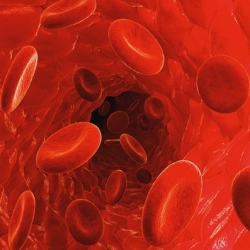
A notorious germ best known for getting people rushing to the bathroom may one day have cancer patients headed to clinics for a new treatment instead. With some genetic tweaking, Salmonella typhimurium transformed from a germ that causes mayhem in people’s intestines to one that can infiltrate deep into the bowels of tumors.
In a study published Wednesday in Science Translational Medicine, South Korean researchers reported that the weaponized gut bacteria could prevent human cancers from growing and spreading in mice, all with no evidence of harmful side-effects.
The study is just in mice and far more work is needed to test efficacy and safety in humans. But the researchers are encouraged by the data so far. Overall, it seems the trained germs have “excellent anticancer effects in diverse mouse tumor models, suggesting that this strategy could be applied to a wide spectrum of malignancies,” the authors conclude.
It’s not the first time that researchers have tried training bacteria to be cancer therapies. In fact, there’s already one treatment, for bladder cancer, that uses Mycobacterium bovis bacillus Calmette-Guein (BCG). But many of the other treatments so far haven’t been very efficient, requiring multiple injections. Even still, tumors usually regrow in the face of those treatments.
For better cancer weapons, a team of researchers led by biologist Jung-Joon Min at Chonnam National University turned to S. typhimurium. Like many of its intestine-dwelling ilk, S. typhimurium will happily wedge itself into tight, necrotic, oxygen-depleted spaces—the exact conditions within tumors.
First, the researchers disarmed the germ, knocking out a potent signal that coordinates its disease-causing activities. Without it, the germ is 100,000- to 1,000,000-fold less virulent, previous research found. Next, the researchers re-armed the subdued Salmonella with the gene for making flagellin B, swiped from Vibrio vulnificus. Flagellin B, or FlaB, is part of bacteria’s whiplike tail that allows them to swim.
It’s known to trigger a swift and strong innate immune response in humans and mice. That immune response is supposed to act as a first-line defense against any invading bacteria. But it also produces a storm of chemicals and a rush of attacking immune cell that can blow away cancer cells.
The researchers engineered their S. typhimurium soldiers to only release FlaB when it got a harmless sugar signal. That way, it didn’t spark intense immune responses randomly.
To test out their cancer-seeking bacteria, Min and the team started by implanting and injecting mouse tumors into mice and then injecting the bacteria into their tails. At first, the bacteria would accumulate in the rodents’ spleens and livers. But three days later, the germs would deploy themselves almost exclusively to the insides of tumors.
After making sure that the sweet FlaB trigger worked, the team found that the bacteria could significantly shrink or eliminate the tumors. In one experiment, the triggered bacteria completely blew away tumors in 11 of 20 mice.
Next, the researchers repeated the experiment with mice with implanted human colon cancer tumors in their intestinal walls. After 27 days, a control group of seven animals, which were implanted with cancer but didn’t get a bacterial injection, had a total of 91 tumors. Eight treated mice had only four relatively small tumors among them (three mice had tumors, while five were tumor-free).
Dissecting the tumors, the researchers confirmed that the bacteria were getting deep into the tumors, releasing FlaB, and triggering an intense innate immune response. Yet, the animals didn’t show any signs of serious inflammation or other side-effects, suggesting that the treatment was safe.
While much more animal and human studies are ahead, so far the authors conclude that their cancer-seeking germs set off “a powerful anticancer immune reaction.”
